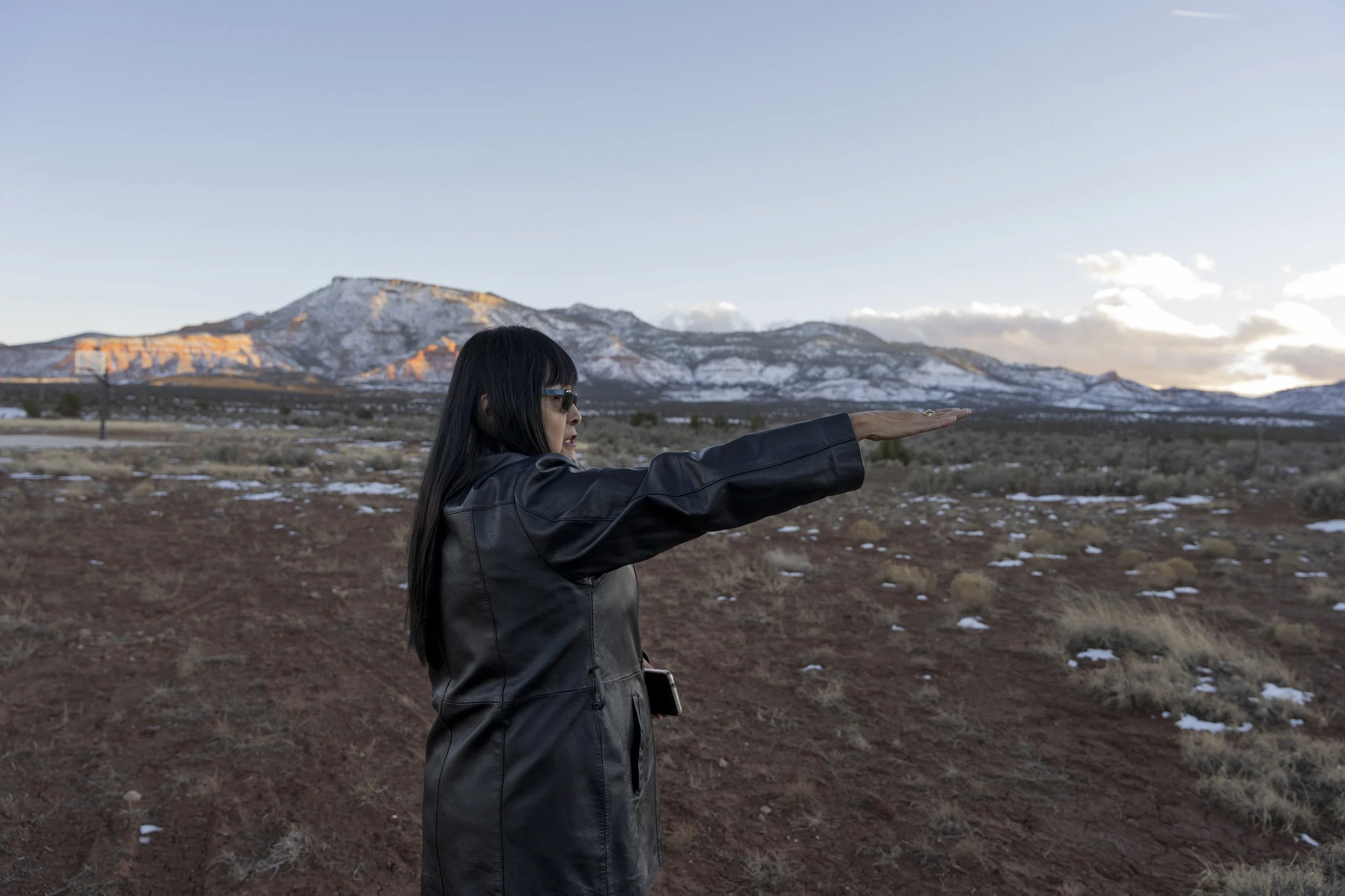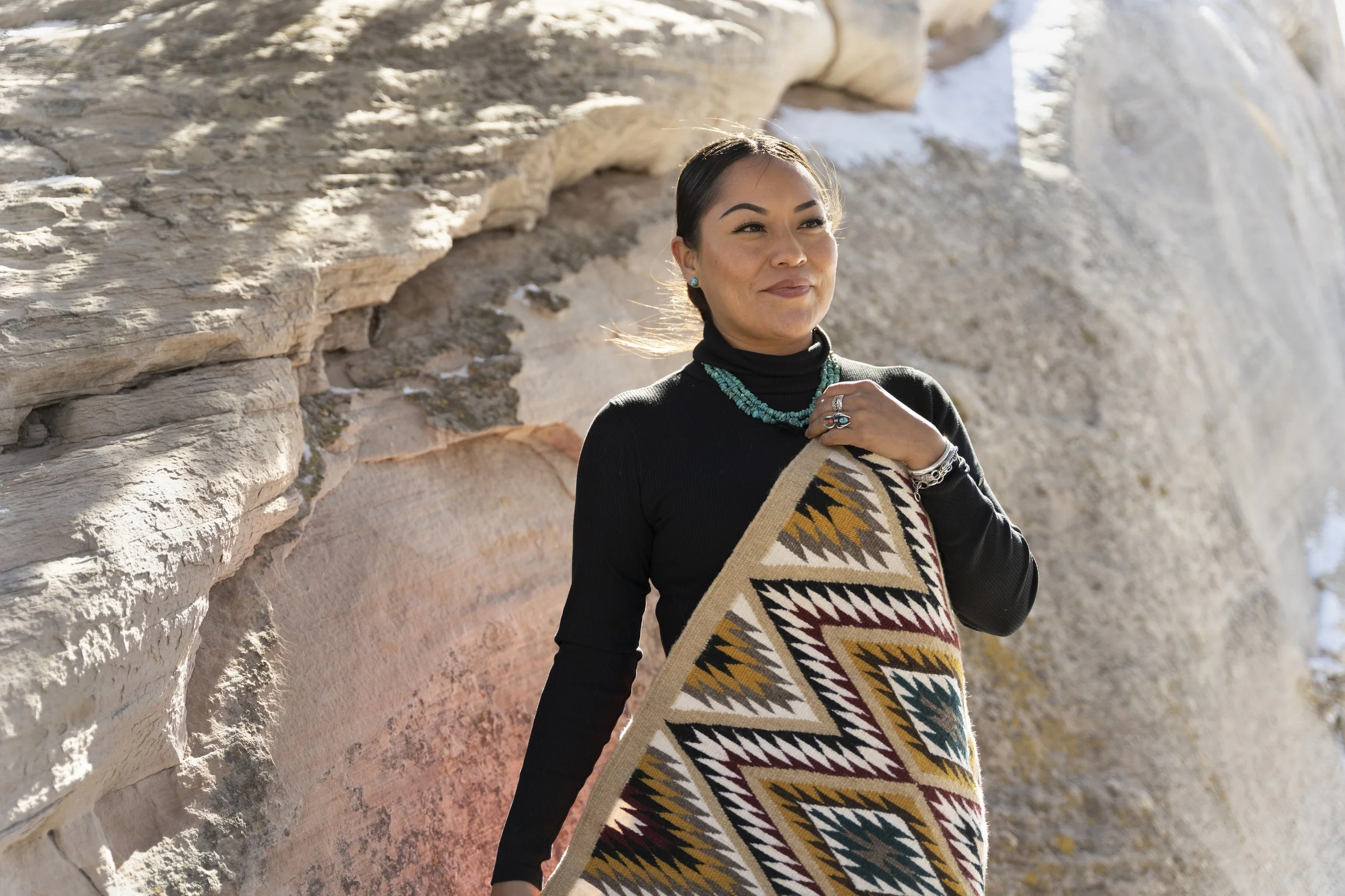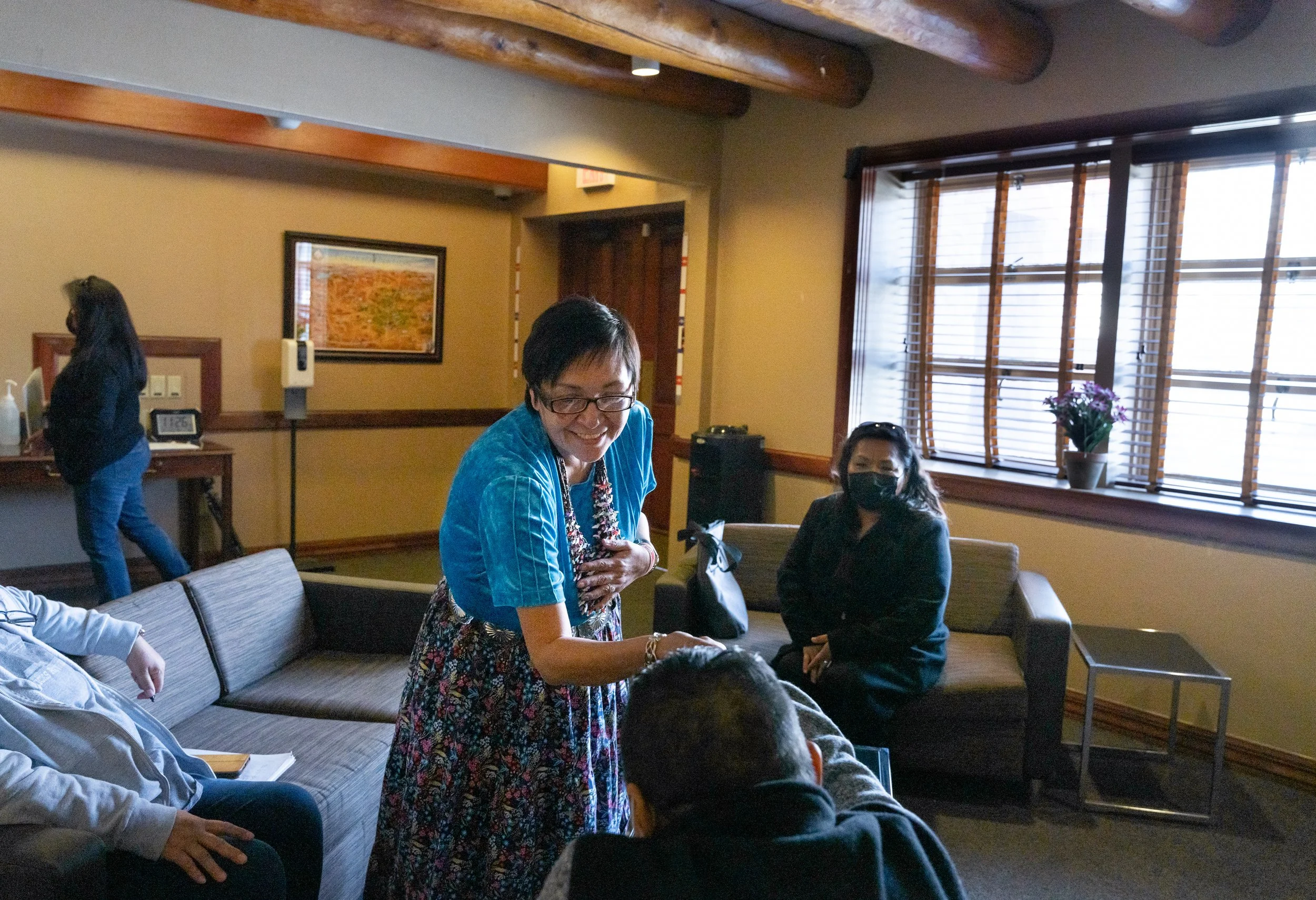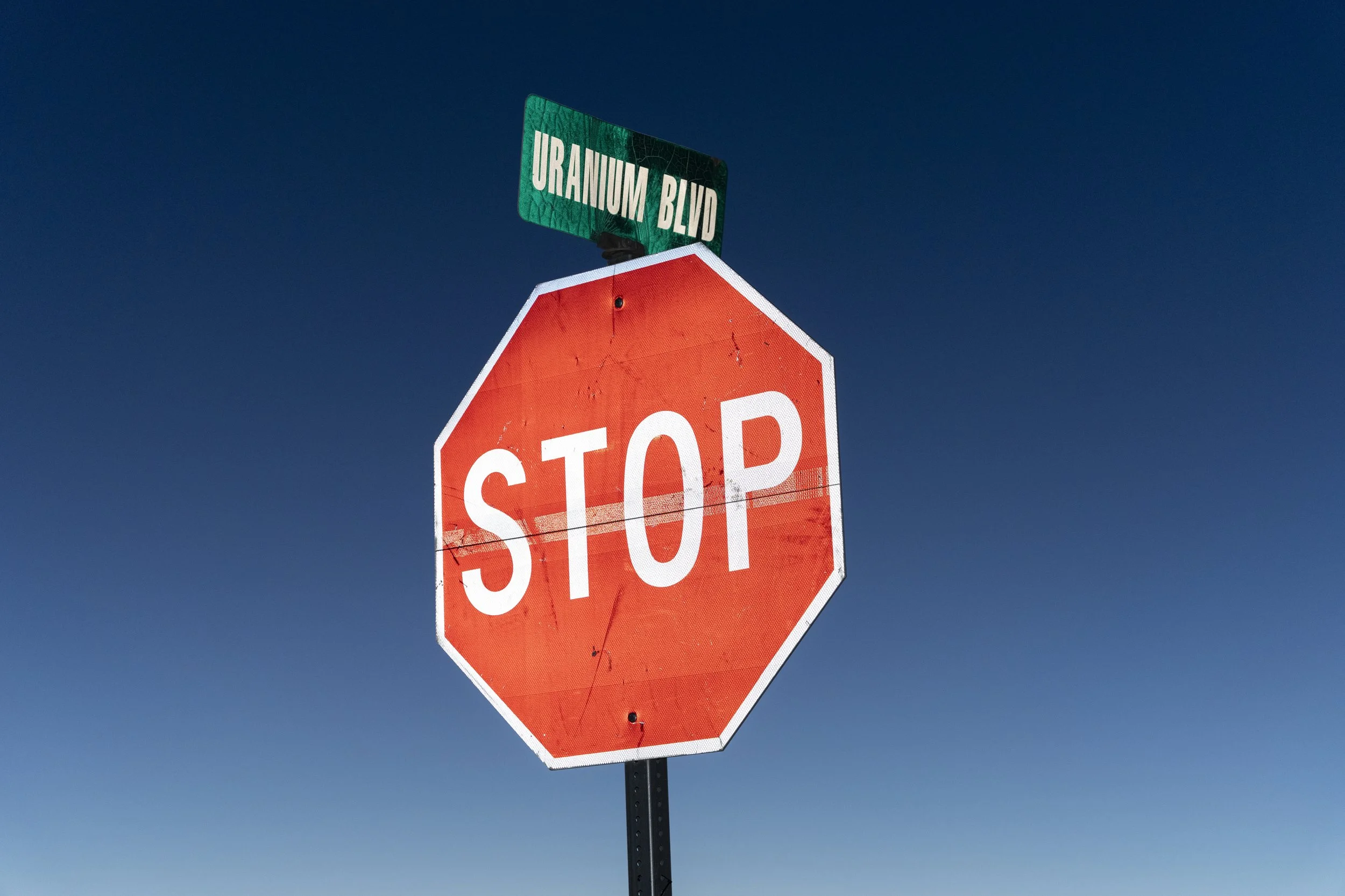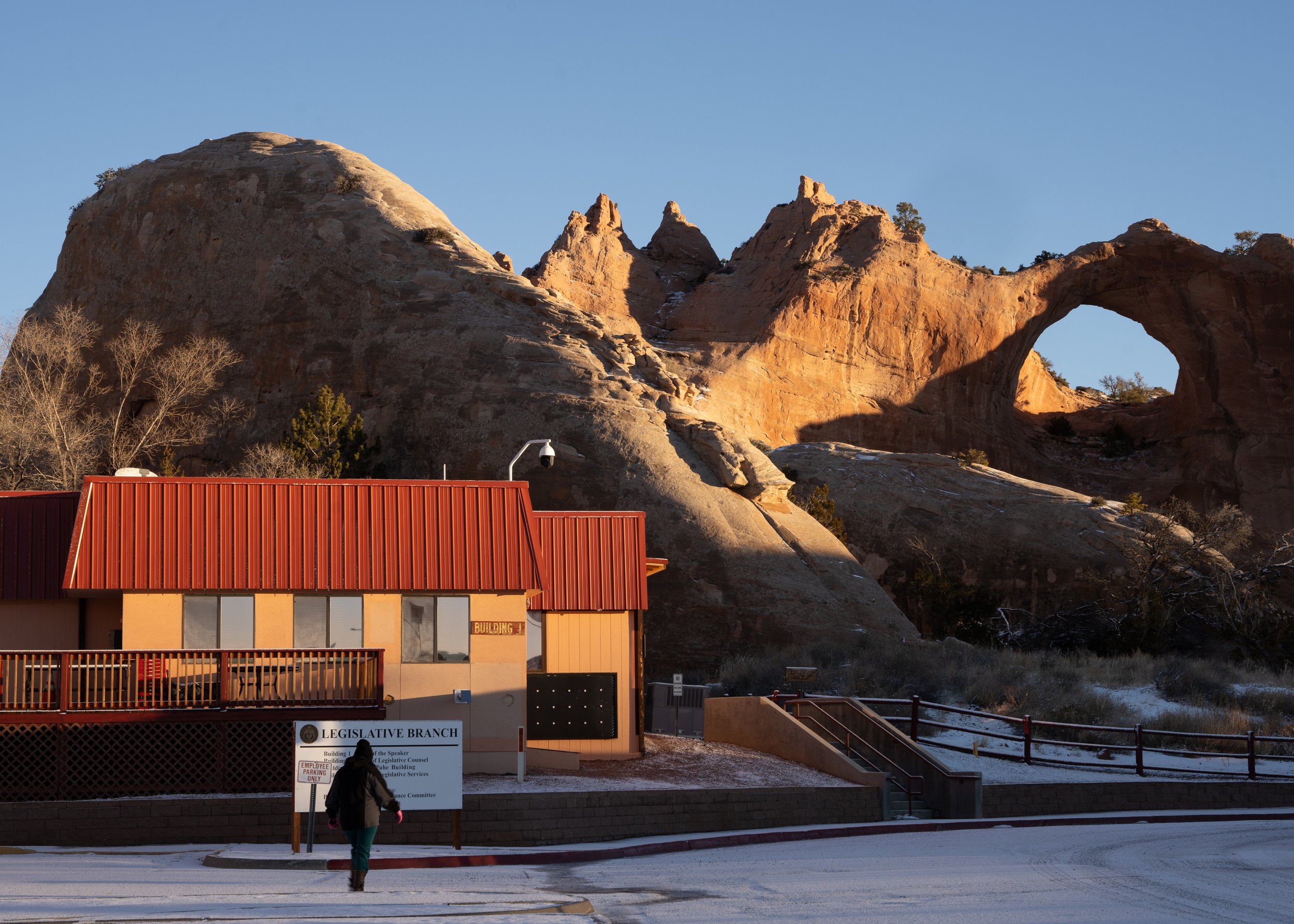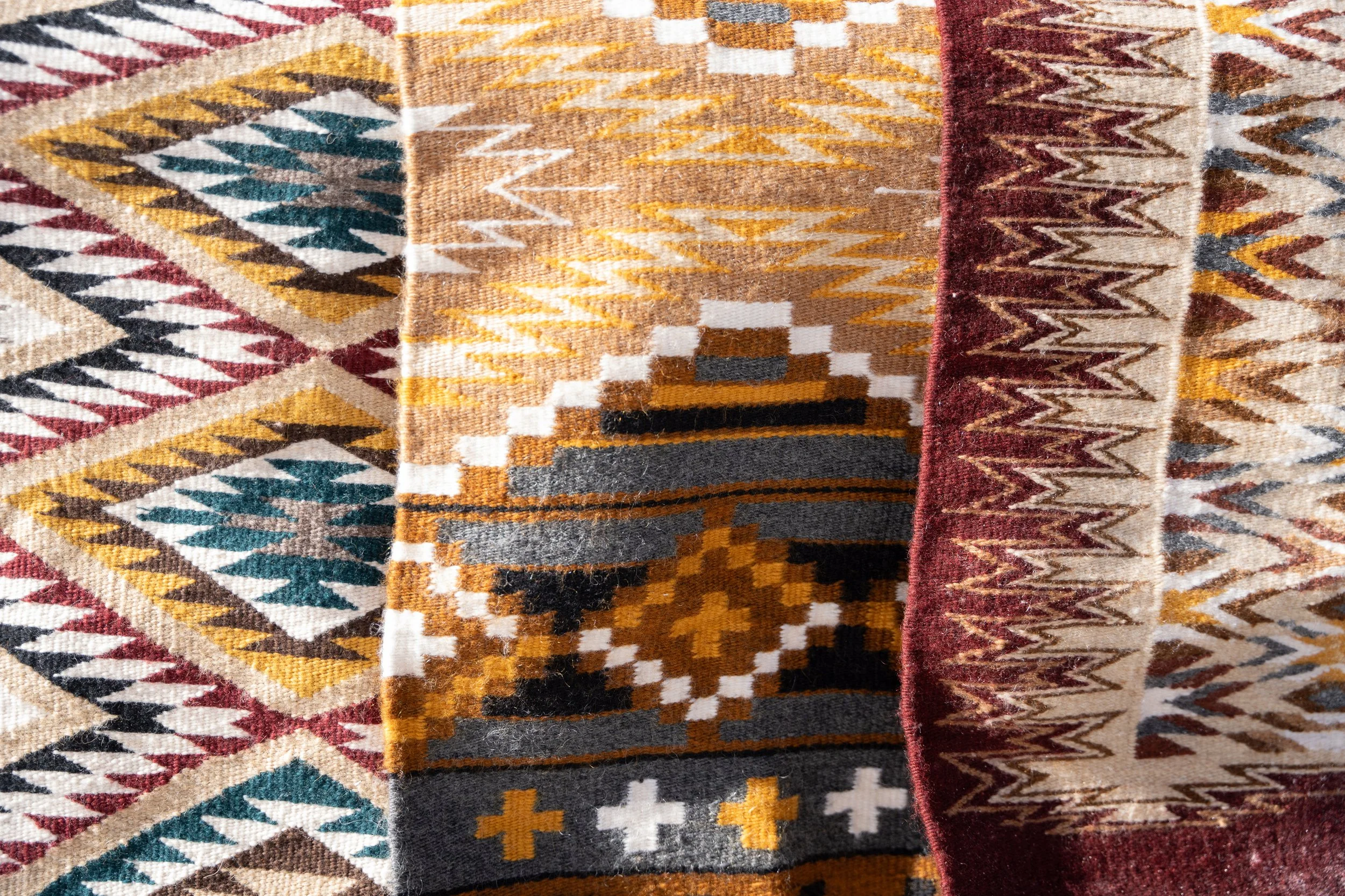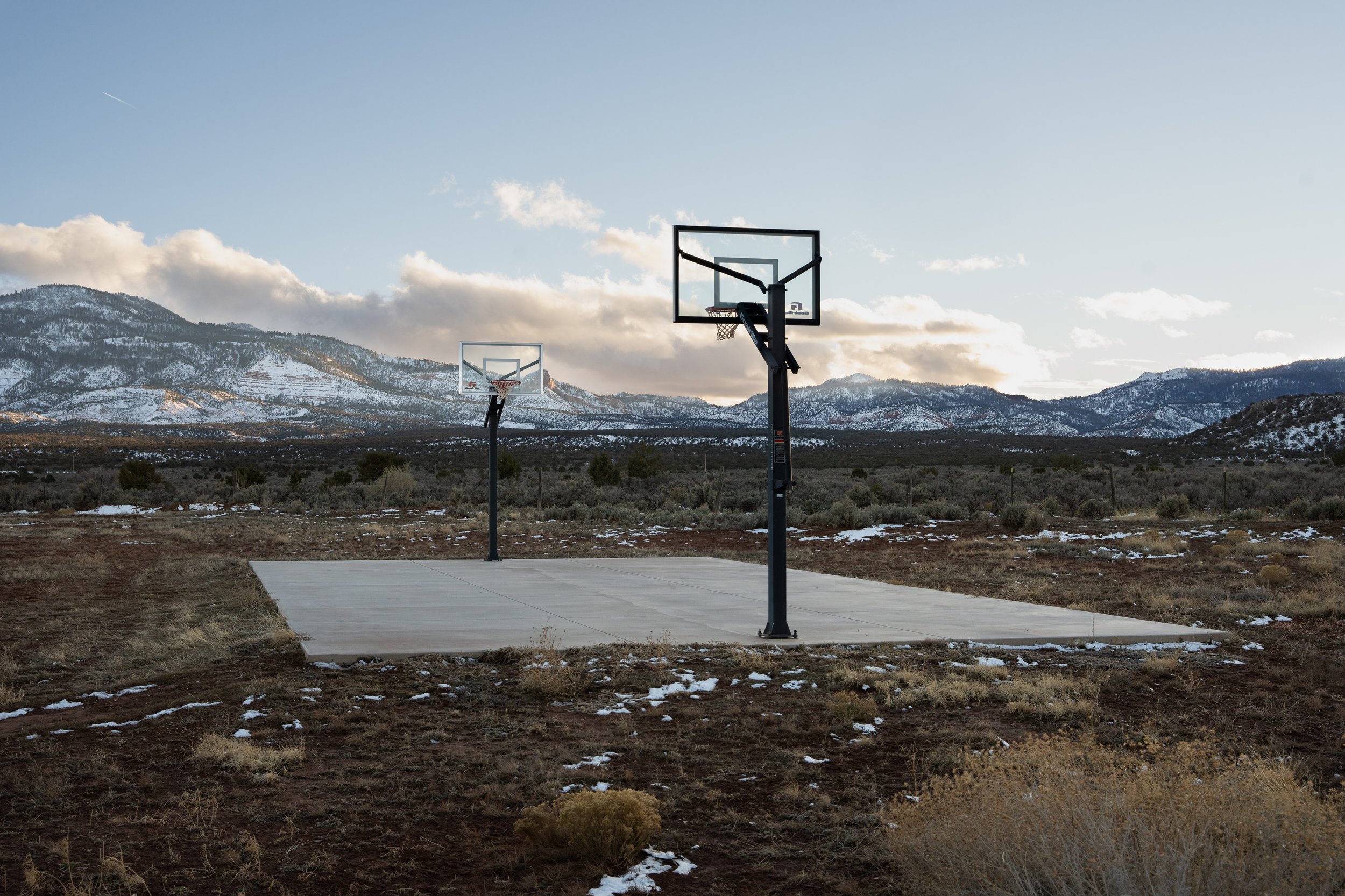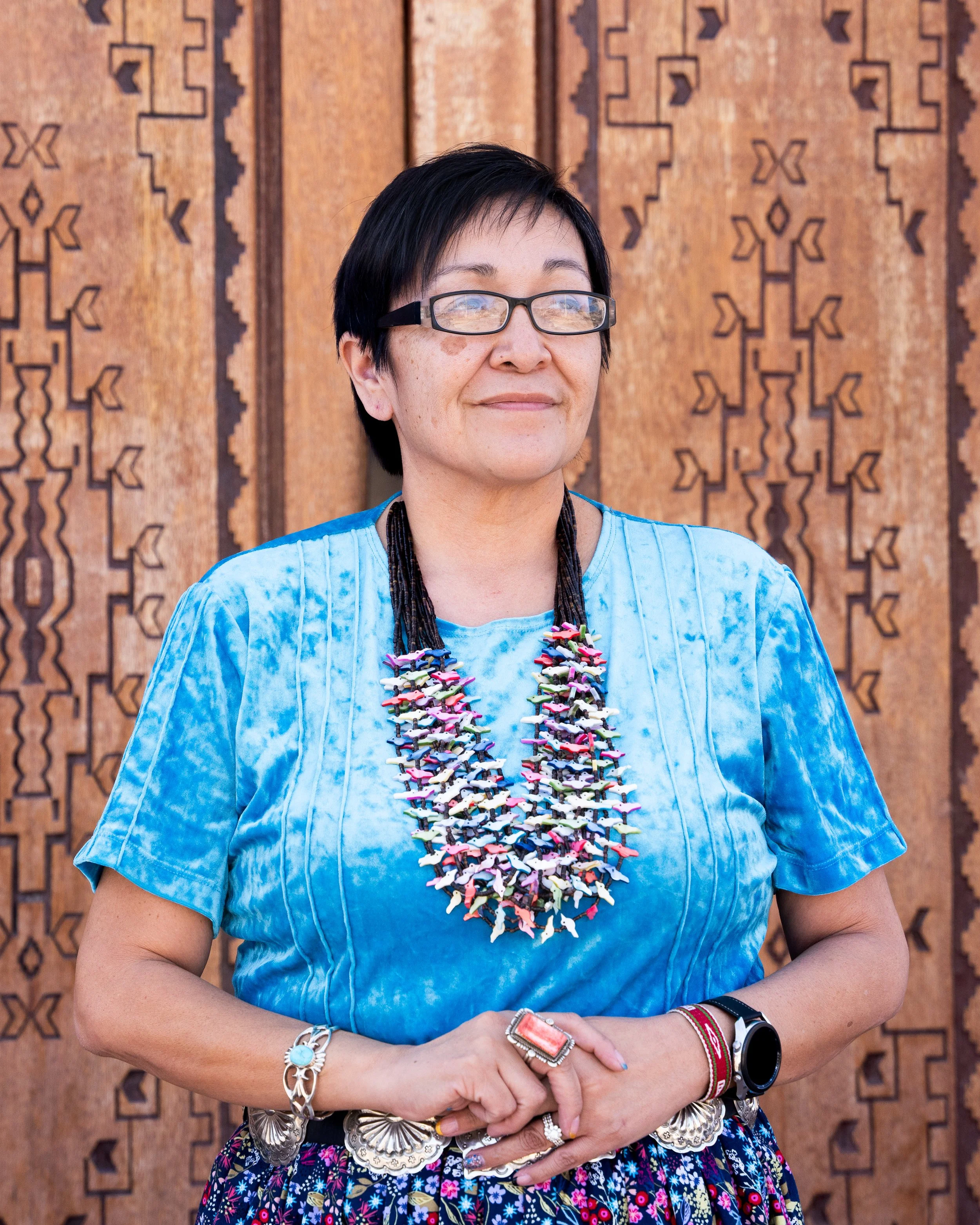Kathleen Tsosie of Farmington, New Mexico describes growing up tending sheep with her grandparents and playing in the small desert town of Cove, Arizona. From the 1940s through the 1980s, The Lukachukai and Carrizo Mountains in the Navajo or Diné Nation in northeastern Arizona were the site of dozens of uranium mines. In 2014, the Environmental Protection Agency entered a legal settlement of $1 billion to assess the environmental damage and clean up mines that were operated by Kerr-McGee Corporation and its successor, Tronox. Because of high levels of uranium in the drinking water, wells can no longer be used for households, livestock, or agriculture. The area was connected to municipal water sources 25 years ago. The Diné Nation is a Native American reservation within the United States.
Tasheena Littleben, of Rock Point, Arizona began weaving Diné rugs as a little girl in Shiprock, AZ in the Diné Nation. After years away from the practice, she returned to it during the pandemic. Littleben processes the raw wool, colors it with natural dyes, and weaves patterns on a loom she built with her father.
Richelle Montoya meets constituents at the Diné Nation Office of the President and Vice President. In November, 2022 Montoya was elected as the first woman vice-president of the Diné Nation.
Visual reminders of uranium mines dot the streets of Shipwreck, Arizona. Because of high levels of uranium in the drinking water, wells can no longer be used for households, livestock, or agriculture.
Window Rock, Arizona serves as the site of the government campus and capital of the Diné Nation.
Tasheena Littleben's woven Diné rugs.
From the 1940s through the 1980s, The Lukachukai and Carrizo Mountains in the Diné Nation in northeastern Arizona were the site of dozens of uranium mines. Because of high levels of uranium in the drinking water, wells can no longer be used for households, livestock, or agriculture.
In 2022, Richelle Montoya was elected as the first woman vice-president of the Diné Nation.
